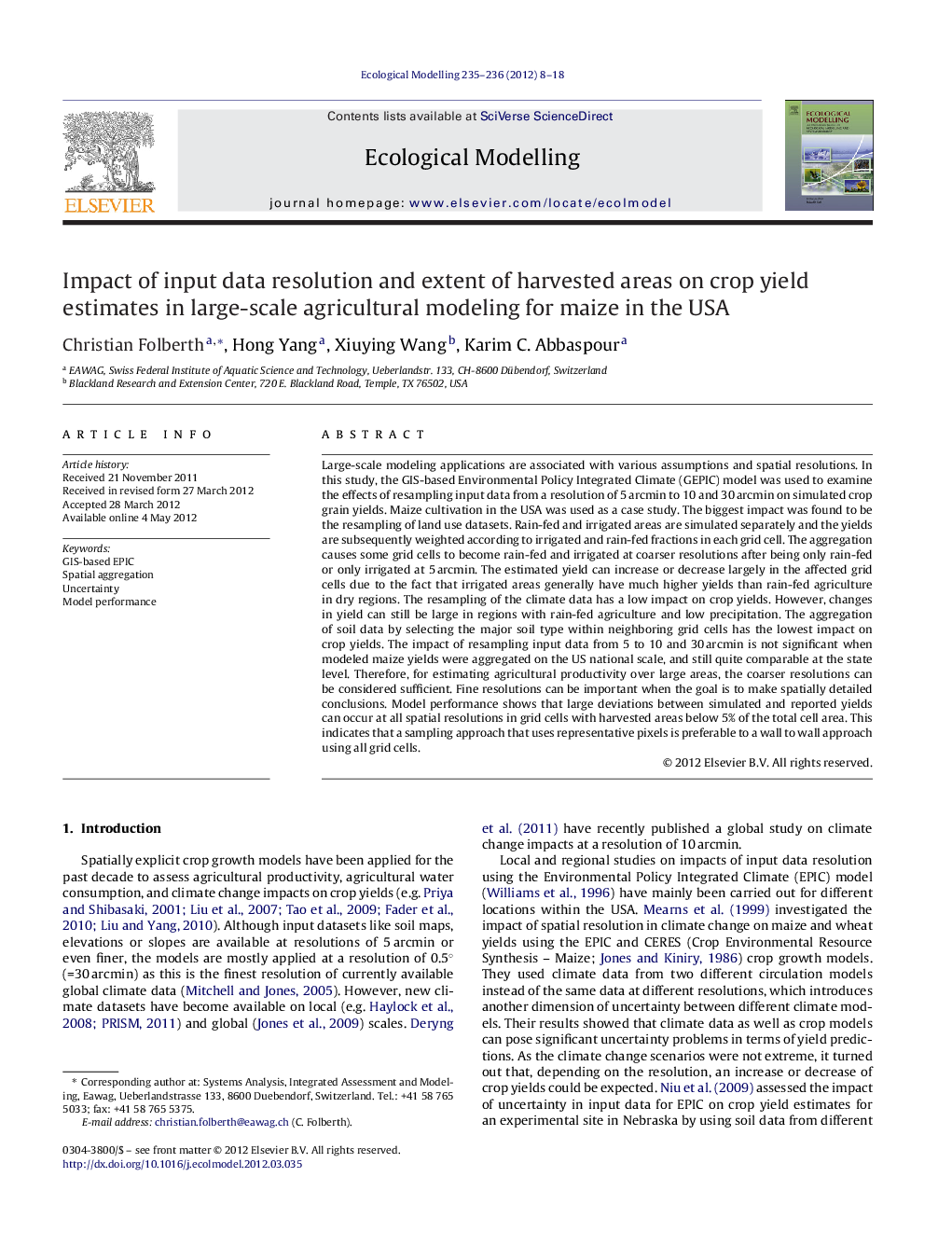| Article ID | Journal | Published Year | Pages | File Type |
|---|---|---|---|---|
| 4376444 | Ecological Modelling | 2012 | 11 Pages |
Large-scale modeling applications are associated with various assumptions and spatial resolutions. In this study, the GIS-based Environmental Policy Integrated Climate (GEPIC) model was used to examine the effects of resampling input data from a resolution of 5 arcmin to 10 and 30 arcmin on simulated crop grain yields. Maize cultivation in the USA was used as a case study. The biggest impact was found to be the resampling of land use datasets. Rain-fed and irrigated areas are simulated separately and the yields are subsequently weighted according to irrigated and rain-fed fractions in each grid cell. The aggregation causes some grid cells to become rain-fed and irrigated at coarser resolutions after being only rain-fed or only irrigated at 5 arcmin. The estimated yield can increase or decrease largely in the affected grid cells due to the fact that irrigated areas generally have much higher yields than rain-fed agriculture in dry regions. The resampling of the climate data has a low impact on crop yields. However, changes in yield can still be large in regions with rain-fed agriculture and low precipitation. The aggregation of soil data by selecting the major soil type within neighboring grid cells has the lowest impact on crop yields. The impact of resampling input data from 5 to 10 and 30 arcmin is not significant when modeled maize yields were aggregated on the US national scale, and still quite comparable at the state level. Therefore, for estimating agricultural productivity over large areas, the coarser resolutions can be considered sufficient. Fine resolutions can be important when the goal is to make spatially detailed conclusions. Model performance shows that large deviations between simulated and reported yields can occur at all spatial resolutions in grid cells with harvested areas below 5% of the total cell area. This indicates that a sampling approach that uses representative pixels is preferable to a wall to wall approach using all grid cells.
► Maize yields were simulated for the USA at resolutions of 5, 10, and 30 arcmin. ► Simulated crop yields at 30 arcmin differed significantly from the higher resolutions. ► The impact of input data resampling for different parameters was land use > climate > soil. ► Aggregated results of all three resolutions at the national level were within ±10%. ► Uncertainty was found to be high in grid cells with little fractions of harvest areas.
